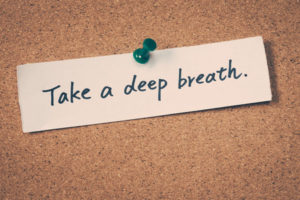
Standing Room ONLY? …without Muscle Pain!
Standing Room ONLY?
3 Tips on Standing without Muscle Pain
Do you cringe when you see “standing room only”?
Do you avoid going places because it hurts to stand too long?
Do you dread standing while talking to colleagues or friends because it takes a toll on your feet, legs and back?
There are ways to stand more efficiently when there is nothing to lean on. Standing with correct alignment may reduce stress and strain to your neck, back and lower extremity muscles and joints. It can also relieve and prevent muscle pain.
The essential element is to keep your weight evenly distributed between both your legs and maintain a subtle rhythmical movement pattern that is barely perceptible to others. It requires mindfulness, but minimal physical effort.
ENJOY PAIN FREE STANDING – try these 3 extra strategies
Sway – leaning tower
- Stand with your feet at hips width apart. Your pelvis should ideally be just in front of your ankle joints.
- Think of shifting your weight forward and back from your heels to your toes and repeat very slowly back and forth. Your toes and heels never come off the ground.
- The main idea is to “sway” forward and backwards by shifting your center of gravity ever so slightly. The pivot of motion is from your ankles.
- Your hips, pelvis, spine, shoulders, neck and head remain aligned and move together as one unit. The ankle joint is the only joint to move. A common metaphor given is the leaning tower of Pisa.
- You may gently tighten your core and gluteal (buttock) muscles for extra support.
- Do not arch your back or push your head forward.
- The swaying movement should be very small and barely perceptible to those around you.
- The motion should be effortless, comfortable and pain free.
Side Shift
- Stand with your feet hip width apart.
- Keep your core abdominal muscles slightly tightened.
- Very slowly transfer your weight sideways from one leg to the other. The heel does not need to lift off the ground, but is fine if it does so slightly.
- Do not let your hips move out to the side further than the distance of your foot.
- It should feel as if you are alternatively pushing one foot into the ground.
- As you shift to one side – an extra tightening of your gluteal (buttock) muscles on that side will give extra support and help prevent the hip moving too far.
- The side shift to the right and left should be so gently and slow that it can be barely perceptible to others around you.
- The motion should be effortless, comfortable and pain free.
Shift and rock
- Stand with your feet hips width apart – but with one foot more in front of the other, as in a natural stride position.
- Transfer your weight from the back foot to the front foot and back again. Visualize your pelvis moving from the center of your back foot to the center of your front foot.
- The heel may lift on the back leg as you shift your weight forward onto your front leg.
- The toes of the front leg may raise up when you rock back onto the back leg.
- You may also tighten your gluteals (buttocks) on the leg that you are accepting the weight, whether that be the front leg or back leg. This will give you extra support and stability.
- The motion should be effortless, comfortable and pain free
Leah Segelov, PT, MA is a Physical Therapist for over 19 years and owner of Segelov Physical Therapy, PLLC in Manhattan, New York. She may be contacted via e-mail at leah@segelovpt.com
Leah specializes in musculoskeletal and orthopedic conditions, TMJ disorders and facial paralysis.
Blog updates can be emailed directly to your inbox. Please subscribe at www.segelovpt.com
Disclaimer: The entire content on this blog is for educational and informational purposes only. No responsibility is taken or assumed for any action taken by the website user as a result of information on this website. Website users should seek their own professional advice regarding their individual situation as to whether a specific or general treatment, remedy or exercise is appropriate for their condition.

 Previous Post
Previous Post Next Post
Next Post



 © copyright 2015 Segelov Physical Therapy, PLLC. All rights reserved.
© copyright 2015 Segelov Physical Therapy, PLLC. All rights reserved.